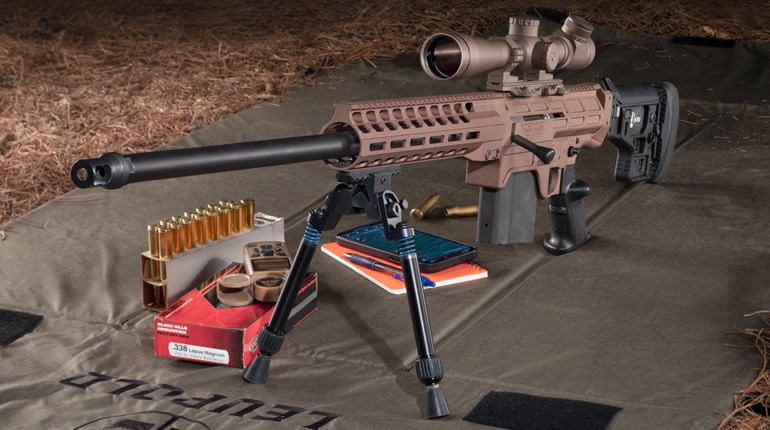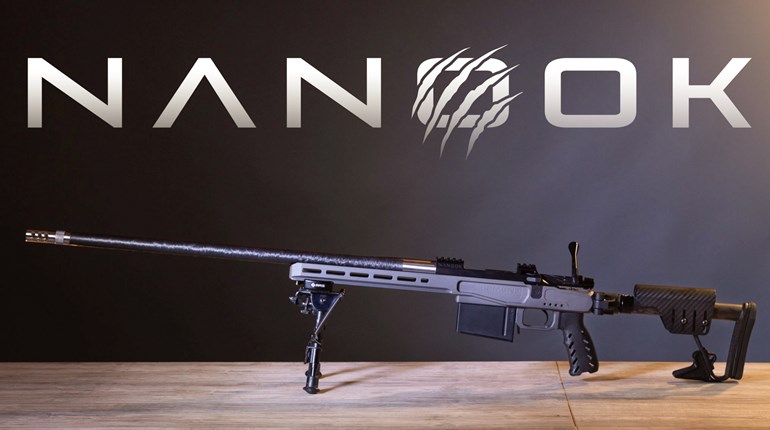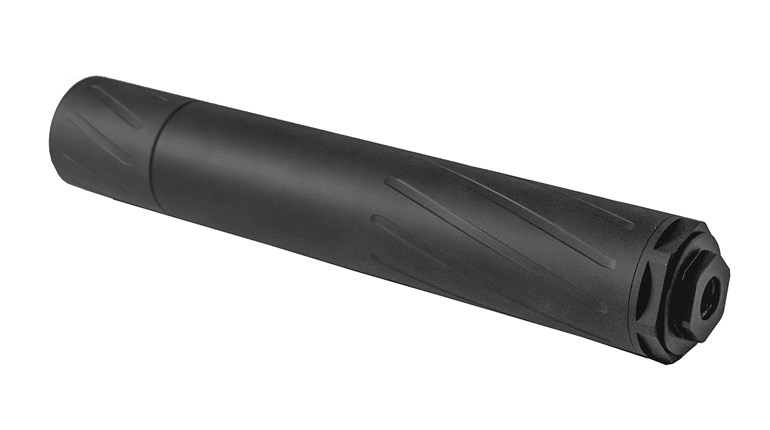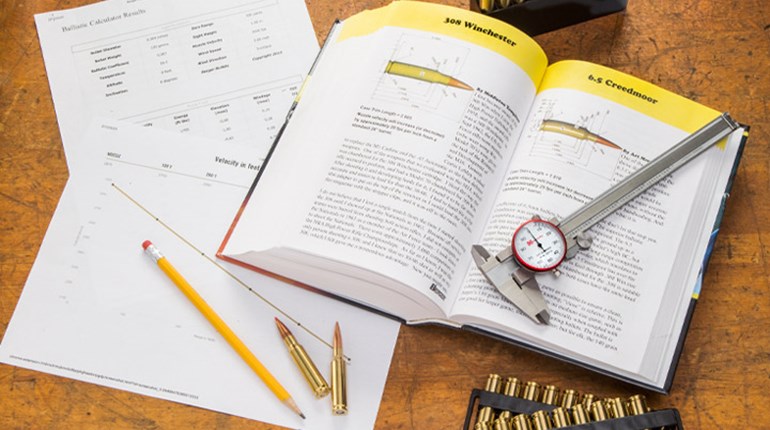
The allure of large-bore firearms has proven to be an intransigent thing. This is not to say that modern trends toward smaller, lighter and faster projectiles are somehow wrongheaded, only that particulars matter. It’s certainly true that flat-shooting cartridges are easier to shoot in many circumstances, light recoil and laser-like trajectories being what they are. But let distances grow and winds spin up, and the disagreements—at least in most circles—generally fade: Heavy is where it’s at.
Just such requirements delivered the .338 Lapua Mag. to shooters of many stripes in the late 1980s. Proceeding from military interest and development efforts at Finland’s Sako and Nammo Lapua Oy, in conjunction with the United Kingdom’s famed Accuracy International, a nearly ideal long-range sniping round for a rifle was born.
The versatility of the mid-sized, non-belted magnum has attracted many admirers in the intervening years. Two-and-a-half tons of muzzle energy and impressive accuracy—often better than 1 moa, and at astonishing distances—tend to do that. The cost of such performance is naturally fierce recoil, but that’s also what brings us back to the Savage 112: One press of the Magnum Target’s trigger will undo the bulk of that punishing .338 Lapua Mag. reputation. Many further boxes, for us, did nothing to restore it.
Part of what makes for such pleasant work in the big Savage is just that: It’s a large, heavy rifle—not quite 13 pounds, and 16.5 pounds as we shot it (including a grand Vortex optic and trusty Harris bipod). A generously proportioned laminate stock fills the hand and provides good head position, though it certainly didn’t tempt us to hike or stalk. Any remaining uncertainties as to where the rifle belongs were put to rest by the 26-inch, heavy-profile barrel, terminated with three inches of muzzle brake: From bench or mat, the 112 means to hit precise targets a long way off—and to hit them hard.

Older rifles in the .338 power class had a barrier to those good hits that the Savage 112 deftly skirted in our range work. Heavy-recoiling rifles frequently ended up with ho-hum triggers in an ill-conceived nod to safety. But in the Savage, an extremely positive ambidextrous safety on the tang does the safety job, and the AccuTrigger does the trigger job. Our gauge could not detect any variation in press weight in many attempts, though delicacy on first shots is advised: Our factory press was 1.5 pounds—a delight, all right, but worthy of care.
We don’t have material gripes about the Savage 112, and certainly none that would put us off the rifle. The limitations of factory ammunition, however, are consequential: Tiny nuances matter, especially if you’re thinking about 1,000 yards and beyond. Good performance in gun “A” is no sinecure whatsoever for gun “B.” We saw slightly over 2 MOA performances on average, but irritating fliers now and again. Still, there are clear signs the rifle will do better. We’d parameterize this with factory, saving the brass, and then head for the reloading bench.
The merits of .338 Lapua Mag. are readily apparent in the fine, affordable Savage Magnum Target, so we end with a warning. When the chance to get behind a Model 112 comes along, take the opportunity, but know your peril: You can acquire the big rifle/big caliber contagion with worrisome ease.
Nuts And Bolts
Ammunition – Despite not being the senior .338 variant, finding ammunition in the Lapua Mag. variety is relatively easy. This is enticing along several lines. If you aren’t a reloader, you’ll still have many factory choices—we found dozens—with which to test a Savage of your own, and tune performance in any individual rifle as well as to the job at hand. Magnum rifle cartridge shooters are probably immune to the sticker shock some factory fodder may offer, but experiment: We had no difficulties with quite reasonably priced Federal/American Eagle 250-grain.
Reloaders can access their traditional benefits, too, and with unusual vigor. Theoretic cost benefits can range beyond 3x by our calculations. Handloaded “match” rounds under $2 per should be possible factoring in the long case life of the Lapua design. Ten different bullet weights (between 200 and 300 grains) and at least a half-dozen powders appropriate to the cartridge were easy to identify.
Optic – There was no question in our minds what glass was destined for the 112. We’d been “saving up” a Vortex Razor HD 4.5-27x56 for a long-range, heavy-duty application, and a rail and rings from Warne made the choice and setup easy.
The surprisingly docile nature of the Savage was as-yet-undiscovered, so pains were taken with scope prep and mounting. The first rationale was practical—stretching a modest ammunition stock. We were well repaid when less than half a box was required to get “on” at 200, and then 400 yards. Additional fine tuning allowed us to move out to 600 while digesting only one more box.
Correct tools are indispensable, especially a torque wrench (in inch-pounds) to get rail and ring screw tensions right. This is particularly important with a powerful rifle and heavy optic combination. The same advice (or device) will let you stay on top of stock screw tension as well—an absolute must on heavy rifles in general, and on the Magnum Target in particular.
As for the Razor, we could find no hint of a shortcoming. With wind reads from our Kestrel Sportsman meter, first focal plane reticle and ultra positive controls kept both adjustments and math easy. Spectacular glass meant we didn’t need all the available magnification, though going up and down was an interesting confirmation of FFP principles at work on the accurate, comfortable Savage.


































